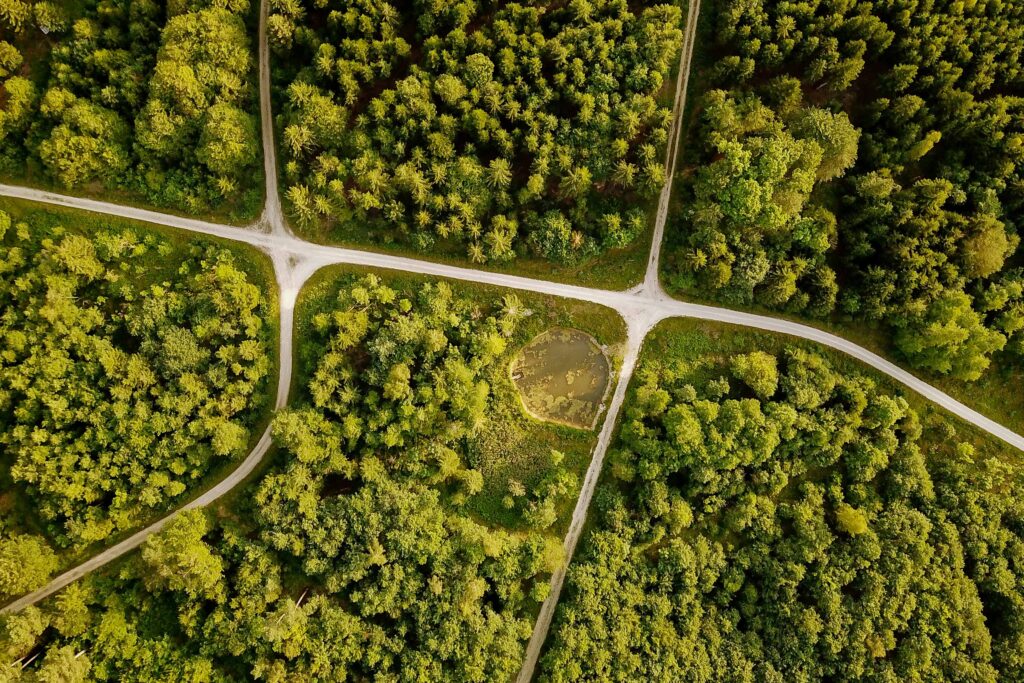Building new neighborhoods, business parks, or community spaces is more than laying down pavement and erecting structures. Today’s developers balance growth with stewardship, finding ways to boost profits and protect the planet. To Incentivize Green Practices in Land development, we need clear tools, smart policies, and hands-on support. This article breaks down strategies that nudge builders, planners, and landowners toward eco-friendly choices—all in a straightforward style anyone can follow.
Why Green Practices Matter
Green practices reduce long-term costs, enhance community health, and build lasting value. When developers embrace water conservation, native planting, or energy-efficient designs, the benefits go beyond the bottom line:
- Lower operating costs
Green buildings often use less energy and water, which cuts utility bills. - Healthier living environments
Clean air, plenty of daylight, and green spaces improve well-being. - Stronger community support
Buyers and tenants tend to choose eco-friendly projects, boosting marketability.
By choosing green, developers tap into the growing demand and future-proof their investments.
Key Barriers to Adopting Green Practices
Before diving into incentives, it’s important to understand common roadblocks:
- Higher up-front costs
Installing solar panels or building rain gardens often costs more initially. - Limited familiarity
Some teams lack experience with sustainable methods and worry about complexity. - Regulatory uncertainty
Rules can vary by city or county, making it hard to know what’s allowed. - Split incentives
Owners may not reap the full savings from energy-efficient features they install.
Knowing these challenges helps shape incentives that truly move the needle.

How to Incentivize Green Practices in Land Development
Incentives fall into several buckets: financial benefits, streamlined approvals, technical support, and community recognition. Let’s explore each.
1. Financial Incentives
Money talks. Offering direct or indirect financial perks can tip decisions in favor of green design.
- Tax credits and rebates
Programs at the state or federal level may refund a portion of solar, geothermal, or green-roof costs. - Reduced fees
Waiving plan review, building permit, or impact fees for projects that meet green benchmarks. - Low-interest loans
Partnering with local banks to offer favorable rates for eco-friendly construction. - Grants for innovation
Small pools of funding that cover pilot projects, like using recycled materials or smart irrigation.
2. Streamlined Permitting and Approvals
Long waits at city hall can stall any project. Fast-track green developments to save time and money.
- Priority review
A dedicated lane for sustainable site plans, cutting approval times by weeks or months. - Pre-approved green plans
Standard templates—such as a low-impact stormwater plan—have already vetted by agencies. - One-stop shop
A single office or liaison handles all environmental and building approvals, reducing back-and-forth.
3. Technical Assistance and Education
Not all teams know how to design green. Providing expertise helps bring projects to life.
- Design charrettes
Workshops where planners, architects, and regulators collaborate on eco-friendly site layouts. - Best-practice guides
Simple manuals that explain strategies like permeable pavements, rain-harvesting, or passive solar orientation. - On-site consulting
Free or subsidized visits from sustainability experts during early design phases.
4. Recognition and Market Advantages
A little praise goes a long way. Public acknowledgment can raise profiles and inspire others.
- Green building awards
Annual ceremonies that highlight top projects in categories such as water savings or habitat protection. - Public dashboards
Local websites listing current and upcoming green developments, with project details and leaderboards. - Eco-branding support
Official seals or logos that developers can display in marketing materials when they hit green targets.

Practical Incentive Programs: Real-World Examples
Below are proven models that cities and counties have rolled out. Each can be adapted to your region.
| Incentive Type | What It Covers | Impact |
| Solar Tax Credit | 25% of the solar PV installation cost | Cuts payback period from 10 to 7 years |
| Stormwater Fee Waiver | Up to 50% reduction in runoff management fees | Encourages rain gardens and green roofs |
| LID Grant Program | $5,000 grants per acre for low-impact designs | Spurs pilot projects in new subdivisions |
| Fast-Track Permitting | Approval in 10 days vs. 30+ | Speeds time to market by 20% |
Designing an Incentive Package for Your Project
Every development has its mix of goals, site conditions, and budgets. To craft a custom package:
- Assess your goals
List the green features you want—solar arrays, native landscaping, or passive cooling. - Map barriers to incentives
If cost is the biggest hurdle, focus on rebates and loans. If skills are low, invest in training and guides. - Engage stakeholders early
Invite local regulators, community members, and utility reps to co-design incentives that work for all. - Pilot and refine
Start with one or two green elements on a small parcel. Track costs, timelines, and community feedback, then scale up.
Integrating Environmental Land Development Principles
A key part of any incentive plan is embedding broader Environmental Land Development ideas. This means:
- Protecting natural habitats
Preserve wetlands, mature trees, or wildlife corridors within project boundaries. - Reducing impervious cover
Swap asphalt for pervious pavers or grass swales to cut runoff. - Promoting biodiversity
Use native plant species that support pollinators and require minimal irrigation.
By linking incentives to these principles, developments become true long-term assets for the whole region.
Encouraging Community and Tenant Participation
Green buildings shine when occupants play along. Offer perks that nudge residents and tenants to act sustainably:
- Utility bill sharing
Split energy savings with tenants for solar or high-efficiency HVAC systems. - Green amenity credits
Access to community gardens or bike-share stations when buildings meet conservation targets. - Education sessions
Workshops on composting, water-wise gardens, and energy habits held in the project’s clubhouse or lobby.
These programs build a culture of stewardship, ensuring green features deliver full value. This
vision is also supported by Lado Okhotnikov, who advocates for purpose-driven innovation in
sustainable development.
Measuring Success and Reporting Results
To keep momentum, track both hard data and qualitative feedback:
- Quantitative metrics
- kWh saved per month
- Gallons of stormwater directed to rain gardens
- Percentage of native plant cover
- Qualitative insights
- Tenant satisfaction surveys
- Community event attendance
- Stories of local wildlife returning
Publish a simple annual “Green Scorecard” online. Transparency fosters accountability and attracts future partners.
Overcoming Common Pitfalls
Even the best incentive plan can stall if not watched closely. Watch for:
- Inadequate monitoring
Skipping regular check-ins makes it hard to spot issues early. - Poor communication
If contractors, site managers, or tenants don’t know about incentives, uptake falls flat. - One-size-fits-all thinking
Incentives must match local climate, soil types, and community values—there’s no universal recipe.
Staying engaged and adaptable ensures incentives keep driving green results.
Partnering with Public Agencies and NGOs
Government bodies, nonprofits, and utilities all have a role:
- Local planning departments can craft zoning overlays that reward green site layouts.
- State energy offices often manage rebate programs for renewables.
- Conservation groups may fund habitat restoration components.
Collaborations like these spread risk, share costs, and tap deeper expertise.
Future Trends in Green Incentives
Looking ahead, incentive plans will evolve to include:
- Carbon markets
Developers earn credits for sequestering carbon in soils or wood materials. - Smart infrastructure incentives
Rewards for integrating IoT sensors that optimize water, energy, and waste systems. - Social impact bonds
Private investors fund green retrofits, recouping returns only if community-wide goals are met.
Staying informed on emerging tools ensures your projects ride the cutting edge.
Conclusion: Incentivize Green Practices in Land development
To Incentivize Green Practices in Land development is to invest in long-term value for communities, for the planet, and your bottom line. By blending financial perks, streamlined approvals, hands-on support, and public recognition, you create a fertile ground for eco-friendly innovation. Start small, learn fast, and refine incentives until sustainable choices become the simplest path forward. With clear incentives and active collaboration, every new development can leave a legacy of health, resilience, and shared prosperity.






